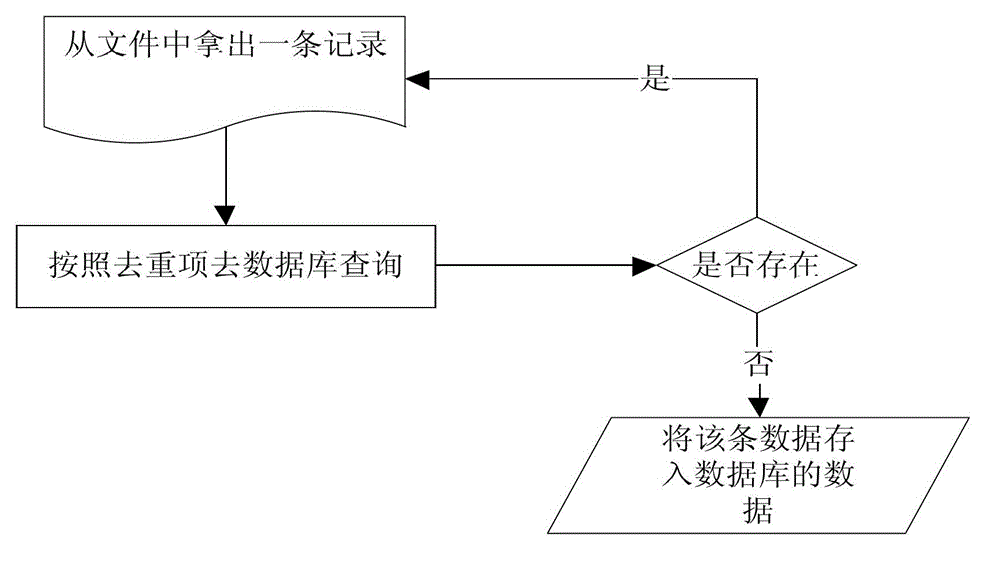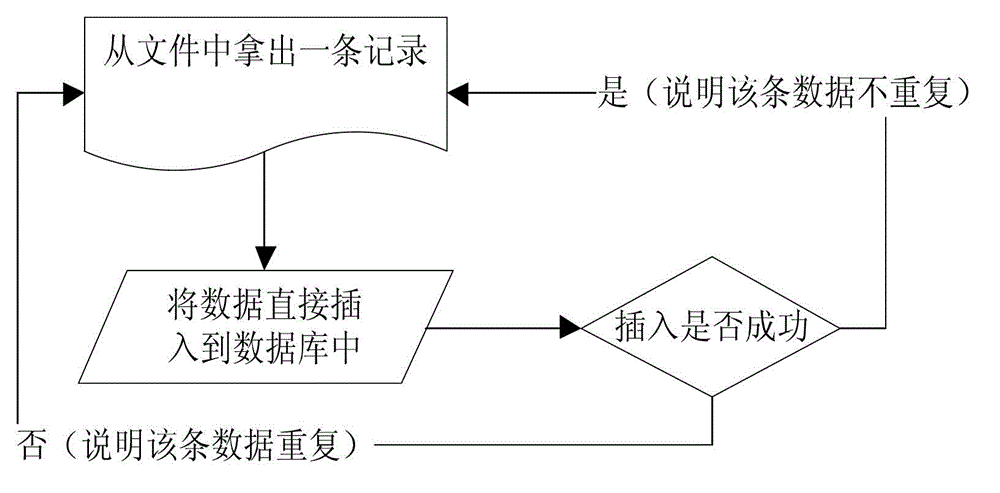Method for rapidly removing repeated list through a memory
A list and memory technology, applied in the database field, can solve problems such as limited database IO speed, high file format requirements, and low efficiency, and achieve the effect of deduplication of lists in batches and improvement of deduplication efficiency
- Summary
- Abstract
- Description
- Claims
- Application Information
AI Technical Summary
Problems solved by technology
Method used
Image
Examples
Embodiment 1
[0047] like image 3 As shown, the steps of deleting duplicate lists in batches through the intersection, difference, and union operations between the current imported list set (TempSet) and the historical list set (AllSet), and updating the historical list set (AllSet) and the historical list information table include:
[0048] The currently imported list set (TempSet) and the historical list set (AllSet) are intersected to find out the duplicate list set, and the duplicate list set (TempSet1) is deleted from the temporary table in batches, where TempSet1=AllSet∩TempSet. The current imported list set (TempSet) is merged with the historical list set (AllSet) to obtain a new historical list set (AllSet1), and the new historical list set (AllSet1) is backfilled into the memory, where AllSet1=AllSet∪ TempSet. Insert the remaining list information in the temporary table into the historical list information table in the database in batches by means of insert select.
Embodiment 2
[0050] The steps to delete duplicate lists in batches through the union operation between the currently imported list set (TempSet) and the historical list set (AllSet), and update the historical list set (AllSet) and the historical list information table include:
[0051] The current imported list set and the historical list set are combined to obtain a new historical list set (AllSet1), where AllSet1=AllSet∪TempSet. Backfill the new history list set (AllSet1) into memory. The historical list information table in the database is replaced by the new historical list set (AllSet1).
Embodiment 3
[0053] The steps to delete duplicate lists in batches through the intersection and difference operation between the current imported list set (TempSet) and the historical list set (AllSet), and update the historical list set (AllSet) and the historical list information table include:
[0054] The currently imported list set (TempSet) and the historical list set (AllSet) are intersected to find out the duplicate list set (TempSet1), and the duplicate list set (TempSet1) is deleted from the temporary table in batches, where TempSet1=AllSet∩TempSet. Insert the remaining roster information in the temporary table into the historical roster collection in batches. Insert the remaining list information in the temporary table into the historical list information table in the database in batches.
[0055] To sum up, compared with the prior art, using the method of the present invention to quickly deduplicate the list through memory, the method of deduplication is imported into the list ...
PUM
 Login to View More
Login to View More Abstract
Description
Claims
Application Information
 Login to View More
Login to View More - R&D
- Intellectual Property
- Life Sciences
- Materials
- Tech Scout
- Unparalleled Data Quality
- Higher Quality Content
- 60% Fewer Hallucinations
Browse by: Latest US Patents, China's latest patents, Technical Efficacy Thesaurus, Application Domain, Technology Topic, Popular Technical Reports.
© 2025 PatSnap. All rights reserved.Legal|Privacy policy|Modern Slavery Act Transparency Statement|Sitemap|About US| Contact US: help@patsnap.com



